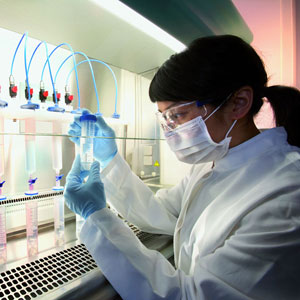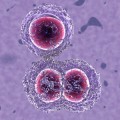Science has been slow in developing the promise of stem cells to cure a vast range of human conditions, from traumatic brain injuries to Parkinson’s disease. Politics and religion have combined forces to cut funding for certain lines of research involving embryonic stem cells, and potential treatments are still costly and under-tested.
One group to benefit from this is animals. There are far fewer ethical questions about developing and using stem cell therapies on animals, while positive results could indicate what lies in store for ailing people if the proper research was conducted.
Take arthritis, for instance. According to the National Institute of Musculoskeletal and Skin Diseases (NIAMS), 37 million people in the U.S. deal with one form or other of arthritis, and that number could reach as high as 59 million in 2020. One million arthritis sufferers require hospitalization every year. It’s a debilitating disease that puts a strain on our healthcare system, affecting people of all ages.
Not just people either, but animals too. Dogs, for instance, also suffer from arthritis, and there is little people can do about it—until now. The Adobe Animal Hospital, a new, high tech veterinary hospital in Los Altos, is testing a new cure for canine arthritis based on stem cells. The cells are injected into the arthritic joints to reduce overall inflammation. The effectiveness of the treatment is still being studied, but some results indicate that it reduces inflammation and increases joint mobility in thirty percent of cases.
The treatment is similar to one that has already been used on humans. In August 2004, “Arthritis & Rheumatism” reported on a middle-aged woman at Northwestern University Hospital, whose rheumatoid arthritis went into remission after receiving stem cells from a sibling. About nine months after the transplantation, her rheumatoid nodules disappeared.
Biotechnology, including stem cell research technologies, may not get the same publicity as clean energy or the internet, but it is one of the foundations of Silicon Valley’s reputation as the high tech capital of the world. Even amateur biologists are starting to take part in some advanced scientific research. In September, the Merc reported about a local club called BioCurious, which is attempting “to bring life sciences within reach of do-it-yourself amateurs.” According to the group, the idea of locating themselves in Silicon Valley is that they will then have access to some of the top minds in our local universities and eventually find capital to fund their innovations. With the right investment, stem cell research, embryonic or not, could be a key component of this. In Los Altos, it is being used to heal dogs. Under the right conditions, it could help humans too.
Read More at ABC 7.

 Silicon Valley’s Best Happy Hours
Silicon Valley’s Best Happy Hours  Amgen Returns to San Jose
Amgen Returns to San Jose 

